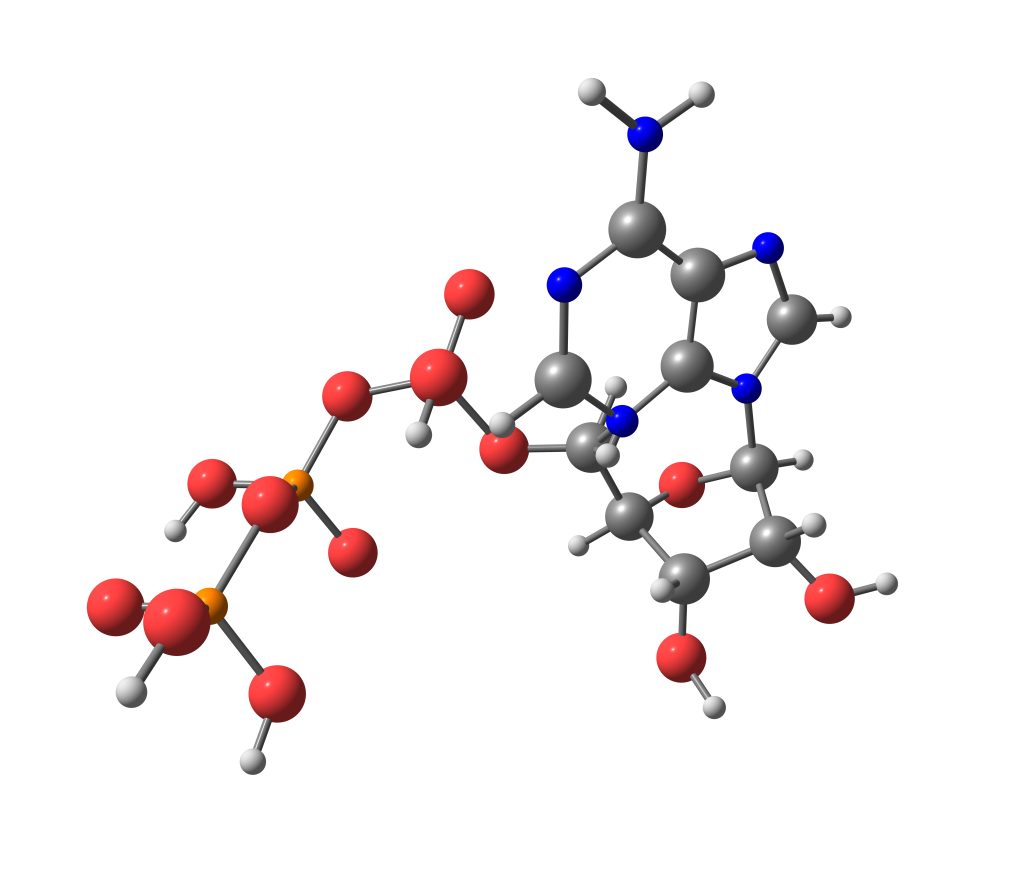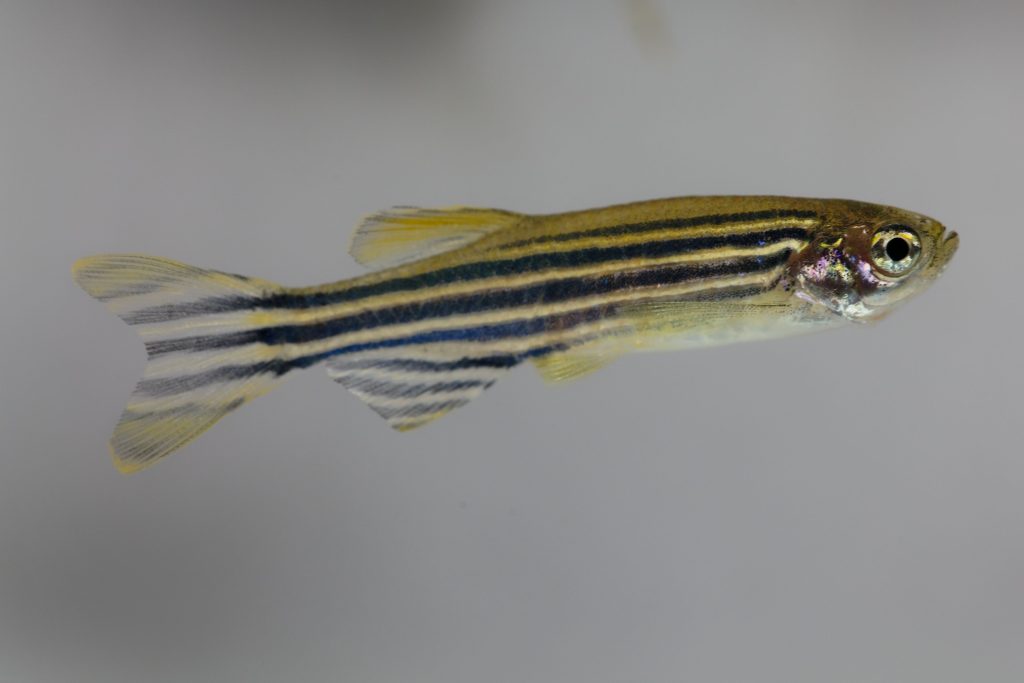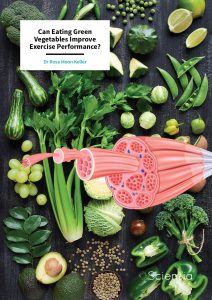Dr. Rosa Keller | Can Eating Green Vegetables Improve Exercise Performance?
Recent work in humans and rodents suggests that consuming nutrients rich in nitrate improves exercise performance, although scientists do not fully understand the mechanisms behind this phenomenon. Dr. Rosa Keller from Oregon State University in the USA, worked with colleagues to investigate the effects of nitrate on muscle function. Unconventionally, the scientists decided to study the effect of nitrate in zebrafish. They observed that keeping fish in nitrate-containing water increased their ability to swim for extensive periods. Analysing chemical changes in the treated animals provided major novel insights into the inner workings of energy use during exercise.
The Need for Energy
Any movement by a human or animal muscle requires energy. Yet, few people are familiar with the fuel muscle cells use to allow them to contract. The immediate source of energy is not sugar or fats but the universal fuel of life on Earth, adenosine triphosphate – ATP for short. As muscle fibres utilise this stored energy, ATP breaks down. We use a lot of this stored energy daily – think about having to replace your own body weight in ATP in 24 hours!
This, of course, is not practical. Instead of ‘eating’ large quantities of ATP, our cells remake it using the energy stored in food we all recognise: sugars and fats. However, there is a catch here. While the breakdown of ATP is instantaneous, rebuilding it by ‘burning’ sugars and fats involves a complex process and is relatively slow. There is another key difference between the two processes: while the use of ATP does not require oxygen, its rebuilding does. This is why we breathe more heavily during physical activity.
Supply and Demand
The chemical synthesis of ATP does not use nitrates, so why would nitrates affect exercise performance? The oxygen and nutrients needed to replenish this critical energy store come from the blood. When we exercise, we do not use all muscles equally, so blood and the oxygen within it, need to reach those muscles working particularly hard during a given activity. This is where nitrates play a role. Released from the active muscles nitrates make blood vessels dilate, ensuring adequate nutrient supply to areas of high demand. Dr. Keller from Oregon State University in the USA was intrigued to find out why nitrate improves exercise performance.

A Gym for Fish
Working with collaborators, Dr. Keller devised a set of experiments to study the effect of nitrates in zebrafish. This included keeping the fish in normal water and putting them through rigorous exercise while measuring their biological behaviour. After establishing this baseline performance, the animals were kept in water containing nitrate for 21 days. After this ‘treatment’, the exercise challenge was repeated, measuring the performance of the same fish.
Using zebrafish in exercise research is a relatively new development, as scientists are just discovering that the responses of fish and human muscles to exercise training show some striking similarities. To study the composition of the muscles, a tiny sample was taken from the animals before the exercise, after the completion of an exhausting swim against a rapid current of water, and at a final post-exercise time point. Then the fish were treated with the nitrate, repeated the exercise and the same samples were taken again.
Chemical Changes
Dr. Keller and her colleagues analysed the chemical composition of the collected muscle samples using a sophisticated method called mass spectrometry, allowing them to detect hundreds of chemicals simultaneously. This way, the team could assess the concentration of not just ATP but also various sugars, fats, and protein components and their breakdown products.
By comparing the amount of these chemical compounds before, during, and after the exercise – with and without nitrate treatment – the scientists were able to build a picture of how muscles changed their behaviour in response to nitrates. In addition, the scientists also analysed whether the response of the muscles involved changes in what genes were active before and after keeping the fish in nitrate-containing water.

More Efficient Swimmers
As Dr. Keller explains, it is possible to measure the level of oxygen in the water while the fish are swimming. Analysing this data indicated an unexpected finding. The distance, time, and speed at which the fish swam were identical before and after nitrate treatment. Yet, the nitrate-treated fish used less oxygen during the exercise challenge, suggesting that their muscles somehow became more efficient at using energy.
When the scientists looked at the chemical composition of the muscles it became apparent that the treatment increased the amount of stored ATP, sugars, and fats inside the muscles, making the animals better prepared for exercise. In addition, genes associated with energy production from sugars and fats were also more active after treatment.
An Exciting Theory
Nonetheless, the swim the fish completed was very strenuous, being both fast and long, so the better performance of the nitrate-treated fish could not be explained by the increased amount of ATP and other nutrients stored in their muscles. Simply put, those stores would have been depleted during the 40 minutes of exercise. Thus, additional mechanisms must have been at work to make the nitrate-treated muscles more efficient.
One possible explanation is that the higher nitrate concentration allowed the treated animals to dilate their arteries more, providing more efficient nutrient supply to their muscles via improved blood flow. However, Dr. Keller has a more interesting theory. She believes that the higher ATP content in nitrate-treated muscles does not act simply as an energy source, but also changes the structure of the muscle, increasing the amount of liquid surrounding muscle fibres. According to Dr. Keller, this better hydration may be the mechanism that allows muscle fibres to work more efficiently. Exploring this theory will be the next important challenge for the team.
SHARE
DOWNLOAD E-BOOK
REFERENCE
https://doi.org/10.33548/SCIENTIA871
MEET THE RESEARCHER

Dr. Rosa Moon Keller
School of Biological and Population Health Sciences
College of Public Health and Human Sciences
Oregon State University
Corvallis, OR
USA
Dr. Keller graduated from Oregon State University with a B.S. degree in Anthropology. After a change in interests, she also gained a B.S. degree in Nutrition from the School of Biological and Population Health Sciences in 2017, during which she was awarded the Best Student of the Year prize. The next step in her scientific training was the completion of a PhD in Nutrition at Oregon State University, where she was working as a graduate research assistant, conducting experimental work using advanced techniques in metabolomics and molecular biology. Dr. Keller currently works as a dietetic intern at the University of California San Francisco Nutrition and Food Services, where she looks after the dietetic needs of kidney, lung, bone marrow, and liver transplant patients and children requiring extensive nutritional support.
CONTACT
KEY COLLABORATORS
Laura M. Beaver, Oregon State University, USA
Patrick N. Reardon, Oregon State University, USA
Mary C. Prater, University of Georgia, USA
Lisa Truong, Oregon State University, USA
Matthew M. Robinson, Oregon State University, USA
Robyn L. Tanguay, Oregon State University, USA
Jan F. Stevens, Oregon State University, USA
Norman G. Hord, University of Oklahoma Health Sciences Center, USA
FUNDING
National Institute of Environmental Health Sciences
Celia Strickland and G Kenneth Austin III Endowment
FURTHER READING
RM Keller, LM Beaver, P Reardon, et al., Nitrate-induced improvements in exercise performance is coincident with exuberant changes in metabolic genes and the metabolome in zebrafish (Danio rerio) skeletal muscle, Journal of Applied Physiology, 2021, 131, 142–157. DOI: https://doi.org/10.1152/japplphysiol.00185.2021

REPUBLISH OUR ARTICLES
We encourage all formats of sharing and republishing of our articles. Whether you want to host on your website, publication or blog, we welcome this. Find out more
Creative Commons Licence (CC BY 4.0)
This work is licensed under a Creative Commons Attribution 4.0 International License. 
What does this mean?
Share: You can copy and redistribute the material in any medium or format
Adapt: You can change, and build upon the material for any purpose, even commercially.
Credit: You must give appropriate credit, provide a link to the license, and indicate if changes were made.
SUBSCRIBE NOW
Follow Us
MORE ARTICLES YOU MAY LIKE
Dr Ralf Adam | New Technologies Shaping the Future of Oral Hygiene
Understanding the efficiency of various toothbrush technologies is essential for achieving optimal oral health. Dr Ralf Adam, who leads a dedicated team at Procter & Gamble in Germany, is keen to investigate the complexities of these technologies. His team have provided new insights into the best toothbrush types for plaque removal and the maintenance of gum health. By highlighting the importance of informed oral care decisions and ongoing investigations, this vital research works towards ensuring everyone can achieve a brighter, healthier smile.
Dr Toby Phesse | Revealing the Mysteries of Wnt Signalling: Novel Approaches to Beating Cancer
Cancer remains a leading cause of mortality worldwide, and the need for new, more effective treatments remains an urgent challenge. Dr Toby Phesse from Cardiff University in the UK focuses on the role of the Wnt receptor found on the surface of cells and its involvement with cell communication and cancer growth, bringing fresh hopes for new therapeutic options.
Dr Vijay Reddy | The Virus World Database: An Invaluable Resource for Public Health and Healthcare
Severe viral disease presents an ongoing challenge to the health of humankind. While unparalleled developments in science and technology are improving our understanding of such viruses, this information needs to be readily accessible to researchers to ensure continued progress in public health and healthcare. Dr Vijay Reddy and his colleagues at the Hormel Institute (University of Minnesota) developed the Virus World database, an invaluable resource that details the genome, structure, and host of practically every discovered virus to date.
Professor Ralf Herwig | Deciphering the Enigma of Vitamin D and the Immune System
Vitamin D has been studied as a treatment for a large number of diseases and conditions, from cancer to autism to COVID-19. However, its mode of action is not completely understood. Professor Ralf Herwig carries out his research at HG Pharma GmbH (Austria) and Ulster University (UK). His vital work explores the role of vitamin D in the body with a view to unlocking its potential as a treatment for a variety of health conditions involving the immune system.





